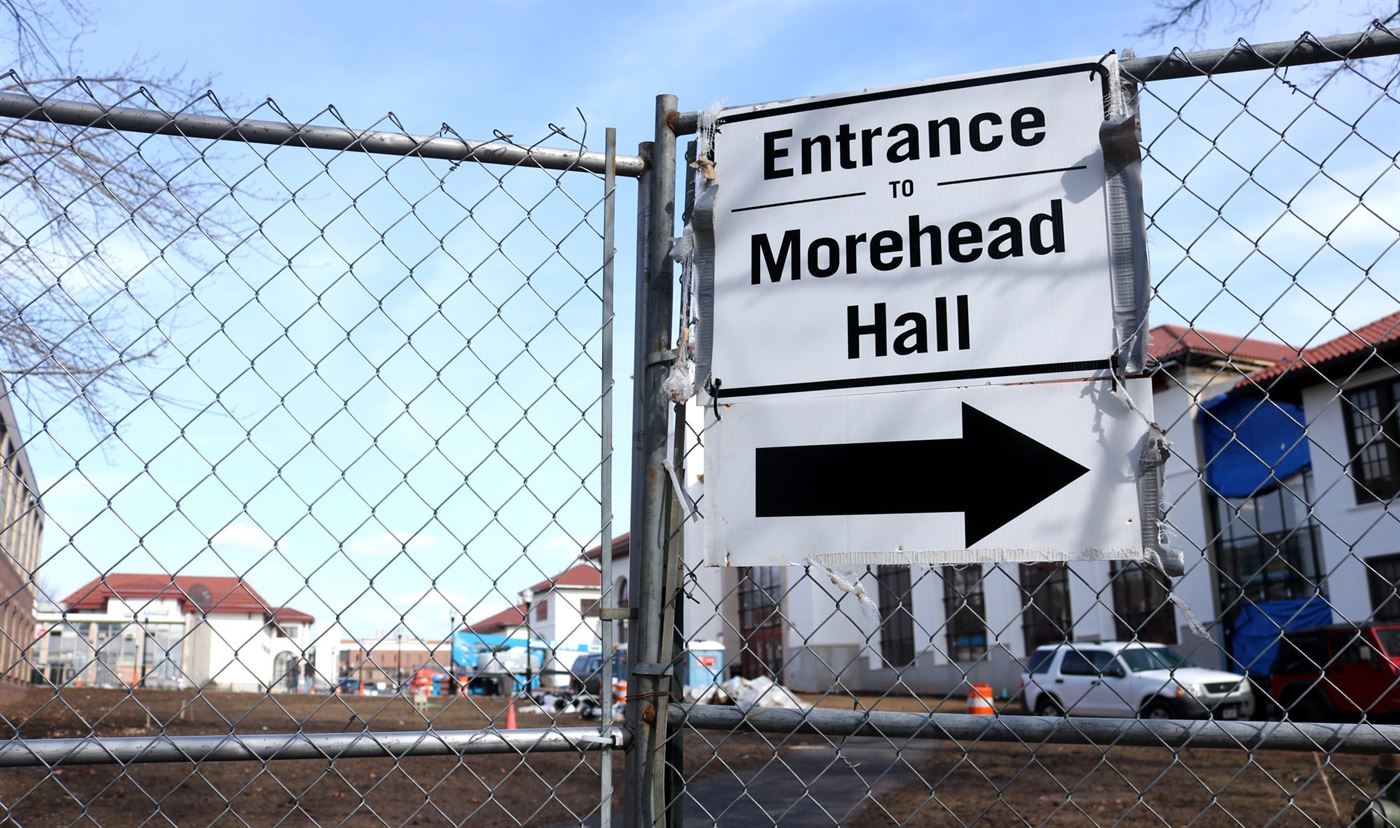
As construction of the School of Communication and Media’s newest building moves along, a lack of a proper pathway has inconvenienced students.
Editorial Cartoon by Dan Evans
When alumni visit Montclair State University, many of them have trouble believing that this is the same school they graduated from years ago, but the one thing that immediately brings them back to their old glory days is construction.
Montclair State is now only a shell of its former self due to the amount of construction that has has occurred over the years. While in many cases, this has resulted in updated facilities and better academic programs, it has come at a cost to individuals on campus in more recent years.
The most substantial roadblock faced by students is quite literally a roadblock. Currently, the walking path that connects Sprague Library to Morehead Hall and College Hall is blocked by fences. Students must now follow a detour which brings them around the backside of Sprague Library and onto University Promenade until they reach College Hall. At that point, they must follow a rocky path that leads them into Morehead Hall.

Students currently have to loop around the library in order to reach Morehead Hall.
Photo credit: Daniel Falkenheim
Admittedly, this detour does not cause distress among students, faculty and staff, but it has become increasingly annoying as the semester has continued. Windy, rainy and cold weather is extremely frustrating, especially when the newly-designed path sits in pristine condition behind construction fences.
Not only is the trek becoming increasingly cold, it also increases the amount of time people need to anticipate spending walking from class to class. For example, a student who has class in College Hall may need to rethink stopping in the C-Store for a snack before heading off to their next class in the basement of Bohn Hall.
The additional time spent walking could prevent students from making that last-ditch effort to memorize a theory for their exam or stopping into their professors office hours to ask a simple question.
A similar situation occurred during last semester and the first few weeks of this semester as Partridge Hall was reconstructed, which closed the walkway between the construction site and the Student Center Annex. This problem was minor in comparison, due to the size of the building.
During past construction projects, Montclair State did not close walkways. In fact, during the construction of the Center for Environmental and Life Sciences (CELS), the university created a temporary pavement path that students could use to get from class to class without the use of detours. This same awareness of a path seems to be absent from the university’s most recent projects.
There is no dispute that the safety of all those on campus is the number one priority, but many believe that a temporary walking path along Sprague Library would not put them in harm, as much of the construction equipment has been removed from the area while the building comes closer to completion.
A narrow, temporary path, like the one created during the construction of CELS, would help to accommodate students, faculty and staff who regularly travel between the buildings on that end of campus.


